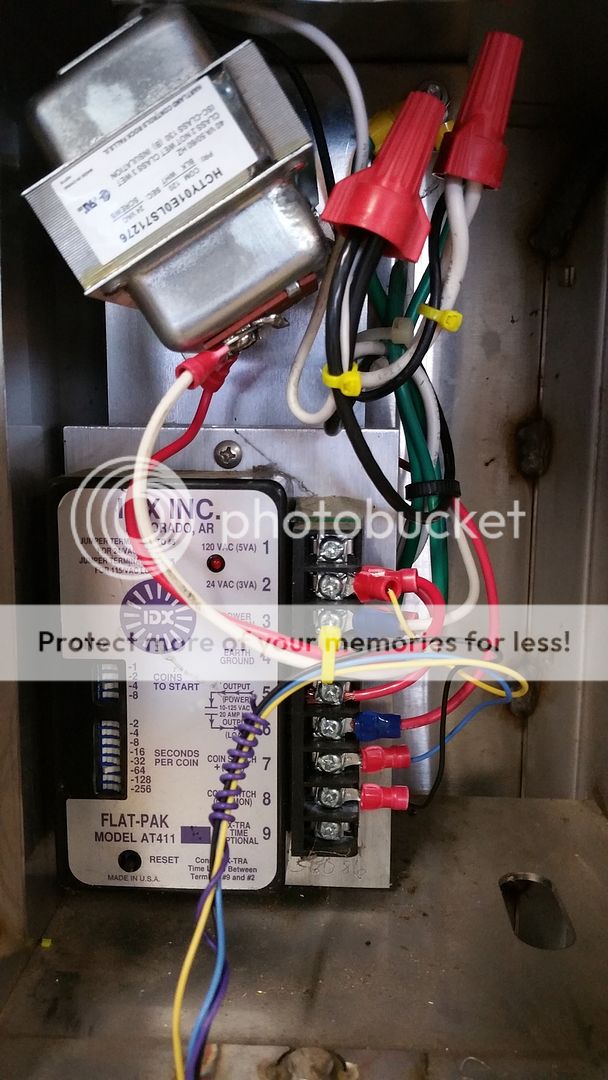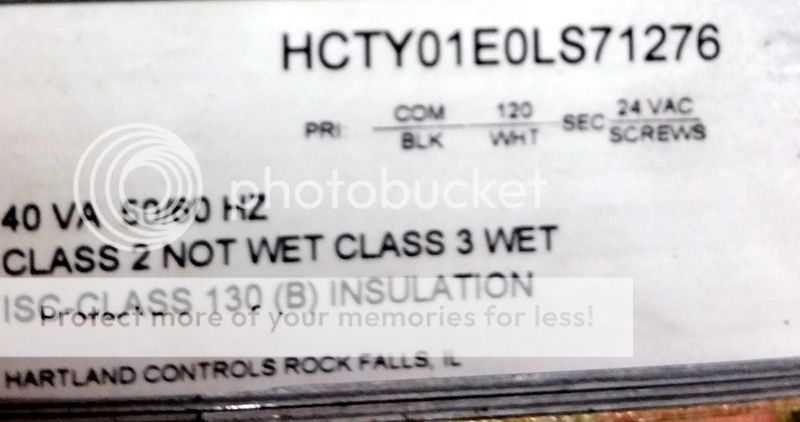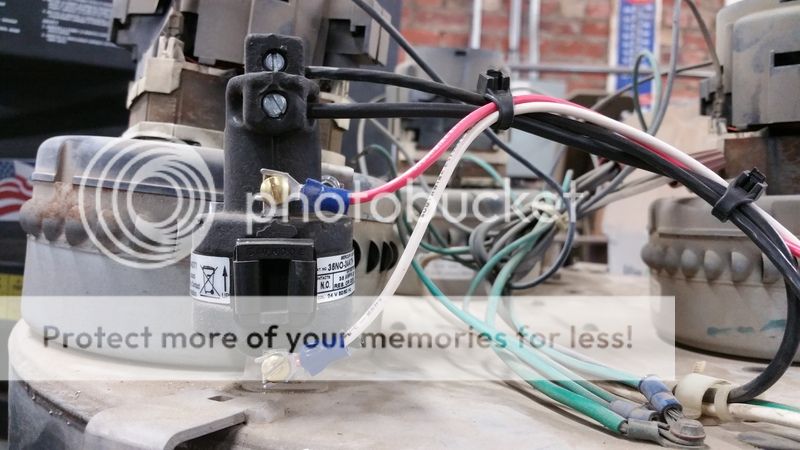I don’t think your fully understanding what you’re trying to do. You’re eliminating the 110 volts on the timer and switching it over to 24 volts. The 24 volt output from the timer is going to control the coil on the mercury replay. This will take the load off the timer.
Disconnect 110 volt wire on Terminal #1, pull that wire up to the top on the relay and put that wire into the seconded hole down on of the relay.
Put a jumper from Terminal #2 to terminal #5
The wire from terminal #6 disconnect this wire from the timer and pull this wire up to the top of the relay and connect it to the top terminal. Install a new wire from terminal #6 and route it up to the relay get connected to the bottom terminal on the mercury relay, this is the coil.
Run a wire from the transformer to the other side of the relay coil, the side of the transformer that has the white wire connected to it now.
Use crimp on spade terminal connectors. Like these http://www.homedepot.com/p/Gardner-...ated-Spade-Terminals-75-Pack-75-111/202522493 on your terminations, it makes for a better looking install.
you're right...I didn't get it. I know I'm probably trying your patience with my questions/just not getting it, but I really appreciate all of your help






